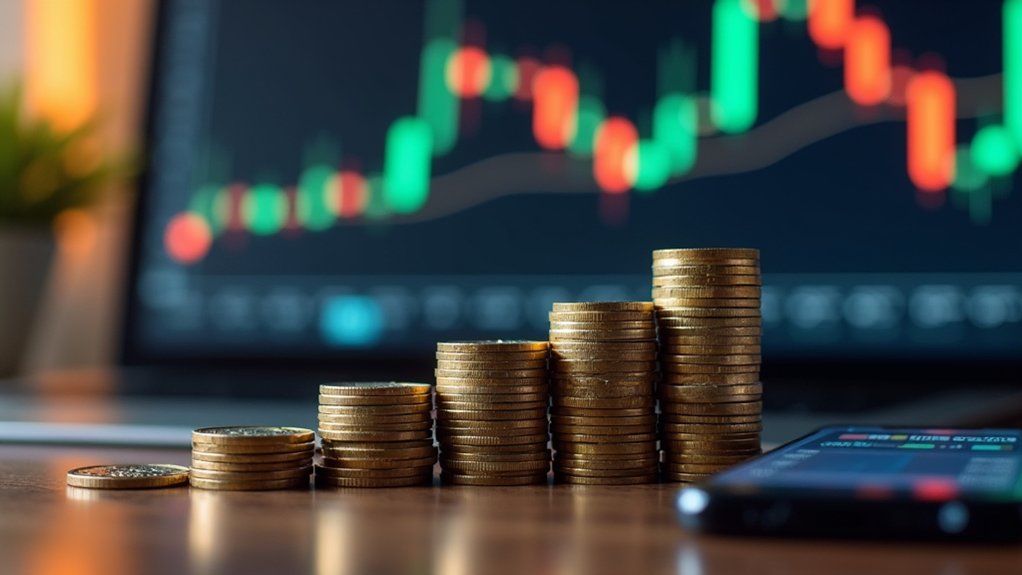A single pip‘s value depends on the currency pair, trade size, and exchange rate—no one-size-fits-all answer here. For major pairs like EUR/USD using a standard lot of 100,000 units, one pip typically equals about $10. Drop down to a mini lot and it's roughly $1 per pip. Yen pairs follow different rules, using two decimal places instead of four. The formula involves dividing one pip by the exchange rate and multiplying by lot size, though calculators handle the heavy lifting for traders managing risk and position sizing.

When African traders first open a forex account—whether they're sitting in Lagos, Nairobi, Johannesburg, or Cairo—they quickly run into a term that sounds insignificant but carries real weight: the pip. It's the smallest price movement in most currency pairs, and it's how profit and loss get measured in this game. For major pairs like EUR/USD or GBP/USD, one pip equals 0.0001. That's four decimal places. For yen pairs such as USD/JPY, it's different—one pip equals 0.01, just two decimal places. The pip is usually that last digit you see quoted on your broker's platform.
A pip—the smallest price move in forex—is four decimal places for major pairs, two for yen pairs, and the foundation of every trade.
Now, understanding what a pip is doesn't mean much unless you know what it's worth. That's where things get real. The value of a pip depends on three things: the currency pair being traded, the size of the trade, and the exchange rate at that moment. The formula is simple enough: pip value equals one pip divided by the exchange rate, multiplied by the lot size. For EUR/USD, it's the lot size times 0.0001. For JPY pairs, use 0.01 instead.
Standard lot sizes are 100,000 units of the base currency. With a standard lot on EUR/USD, one pip is worth about ten dollars. Drop down to a mini lot—10,000 units—and that pip is worth roughly one dollar. Go smaller still to a micro lot of 1,000 units, and it's about ten cents per pip. These numbers matter when a trader in Accra or Dar es Salaam is trying to figure out how much they stand to gain or lose. Understanding standardized trading units helps traders communicate more effectively with brokers and manage their positions with precision. Traders rely on accurate pip calculations when determining their position sizes for each trade they enter. Monitoring these price changes becomes second nature as traders learn to track market movements throughout their trading sessions. Calculating these values correctly helps traders establish proper position sizes that align with their risk tolerance and account balance.
The pip value shifts depending on what currency pair is being traded. A trader in Morocco working USD/CAD at 1.0200 with a mini lot would see one pip worth approximately 98 cents. Someone in Mauritius trading GBP/JPY at 123.00 with the same lot size would calculate a pip value around 0.813 British pounds. If the account is denominated in something other than the quote currency, conversion is required. It gets messy fast. For gold (XAU/USD), the pip structure differs slightly—one pip equals 0.01 USD, and with a standard lot of 100 ounces, each pip movement translates to one dollar in profit or loss. For indices like the US500, many use the second decimal place where the pip equals 0.01, and with 100 units, the pip value works out to one dollar. Brokers also quote fractional pips, known as pipettes, which represent one-tenth of a standard pip and appear at the fifth decimal place for most pairs, allowing for tighter spreads and more precise pricing.
There are pip calculators scattered across the internet—platforms like FXTM, Myfxbook, and broker-provided tools. They do the math automatically and adjust for real-time exchange rates. Traders across the continent use them to skip the headache. Because at the end of the day, knowing pip value isn't optional. It's how position sizing, risk management, and stop-loss placement all get determined. Every price tick translates to actual money won or lost.
Common Questions
How Do Pip Values Change When Trading African Currencies Like the Naira or Cedi?
Trading Nigerian naira or Ghanaian cedi pairs? Pip values shrink fast. The formula stays the same—(Pip Size / Exchange Rate) × Lot Size—but massive exchange rates like USD/NGN at 1,400+ crush the pip value when converted back to dollars. A one-pip move in a standard lot becomes pocket change in USD terms.
Wide spreads and low liquidity make things worse. Most brokers don't even support these pairs directly, forcing manual calculations that change by the minute.
Do African Brokers Calculate Pip Values Differently Than International Brokers?
No, African brokers don't calculate pip values differently. They use the same standard formulas as everyone else—0.0001 for most pairs, 0.01 for JPY pairs. The math doesn't change based on geography.
South African brokers regulated by the FSCA, Nigerian platforms, Kenyan operations—they all follow international conventions. The platforms are automated, the calculations identical.
Any broker claiming a “special African method” is either confused or lying. Pip value depends on lot size, exchange rate, and currency pair. That's it. Nothing magical about location.
What Pip Value Should I Use for Exotic Pairs Involving African Currencies?
The pip value depends on position size, exchange rate, and account currency—not on whether the pair is exotic. For a standard lot (100,000 units) of USD/ZAR or EUR/NGN, calculate it the same way as any other pair: one pip (0.0001) times lot size, converted to account currency using current rates.
African brokers use identical formulas as international platforms. The “exotic” label doesn't change the math. Most brokers auto-calculate pip values anyway, saving traders from spreadsheet headaches.
How Does Currency Depreciation in Zimbabwe or Sudan Affect Pip Calculations?
Currency depreciation wrecks pip calculations in Zimbabwe and Sudan. When Zimbabwe's ZiG crashes from 17 to 55 per USD in a year, pip values collapse in real terms.
Inflation above 85% and parallel rates 50% higher than official quotes mean traders face wild swings in what a pip actually costs or earns. Money supply doubling fuels chaos.
Official pip values become fiction—market reality sits elsewhere. Redenominations reset everything constantly. Risk management? Nearly impossible when the baseline evaporates weekly.
Can I Trade Fractional Pips With Brokers Operating in Nigeria or Kenya?
Yes, most international brokers serving Nigeria and Kenya offer fractional pip pricing—that extra decimal digit showing 1.10514 instead of 1.1051.
It's standard on MT4/MT5 platforms for major pairs. Tighter spreads, better order precision, and more accurate risk management follow.
Some smaller local outfits still use old-school 4-decimal quotes, though.
The trick? Verify broker specs and regulatory licenses before depositing. Test a demo account (Official Site 🔗) first—confirm those 5-digit quotes actually execute as advertised.










